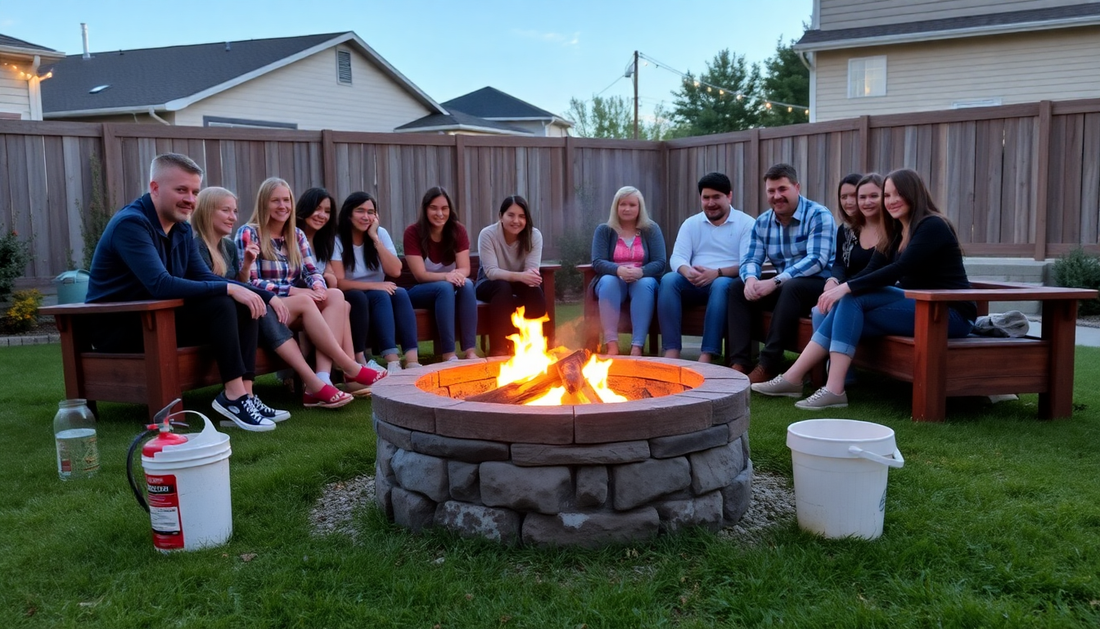
Mastering the Art of Backyard Campfires: A Guide to Safety and Maintenance
Take FireAs the sun dips below the horizon, the crackle of a cozy campfire beckons us to gather around and bask in its warmth. Whether you're hosting a backyard gathering, roasting marshmallows with the family, or simply enjoying the tranquility of a starry night, a well-maintained campfire can elevate any outdoor experience. However, with the joy of a backyard campfire comes the responsibility of ensuring safety and proper maintenance.
At Take Fire, we understand the importance of creating a safe and enjoyable environment for all to experience the magic of a backyard campfire. In this comprehensive guide, we'll explore the essential steps to ensure your campfire remains a source of comfort and not a potential hazard.
Campfire Safety Measures
The safety of your family, guests, and the surrounding environment should be the top priority when enjoying a backyard campfire. Let's dive into the key safety measures to keep in mind:
Choosing the Right Location
Selecting the appropriate location for your campfire is crucial. Avoid placing it near overhanging branches, dry leaves, or other flammable materials. Ensure the fire pit or designated area is a safe distance from any structures, fences, or vegetation. Consult your local fire department or municipal guidelines to understand any specific regulations or restrictions in your area.
Preparing the Fire Pit
If you have a dedicated fire pit, make sure it is in good condition and free of debris. Ensure the pit is surrounded by a non-combustible material, such as gravel or sand, to prevent the fire from spreading. If you're using a portable fire pit, follow the manufacturer's instructions for proper setup and placement.
Monitoring the Fire
Never leave a campfire unattended, even for a short period. Designate a responsible adult to keep a close eye on the fire at all times. Provide a fire extinguisher, water, or sand nearby to quickly extinguish the fire if necessary.
Extinguishing the Fire
When it's time to call it a night, make sure to extinguish the fire completely. Douse the fire with water, stirring the ashes to ensure there are no lingering embers. Double-check that the fire pit is completely cool before leaving the area.
Child and Pet Safety
Campfires can be mesmerizing for children and pets, but they also pose a significant risk. Establish clear boundaries and supervise their interactions with the fire at all times. Consider using a fire pit cover or screen to prevent accidental contact.
Maintaining Your Backyard Campfire
Proper maintenance is essential to ensure the longevity and safe operation of your backyard campfire. Here are some tips to keep your fire pit in top condition:
Seasonal Maintenance
Depending on your climate, the maintenance needs of your fire pit may vary. In the spring, inspect the pit for any cracks, damage, or debris that may have accumulated over the winter. Clean the interior and exterior, and ensure the structure is stable.
During the summer months, be vigilant about clearing away any overgrown vegetation or dry foliage around the fire pit. Regularly remove ashes and unburned wood to maintain the proper depth and airflow.
As autumn approaches, consider covering or storing your portable fire pit to protect it from the elements. For in-ground fire pits, ensure proper drainage to prevent water buildup and potential damage.
Fuel Management
Choose the right type of fuel for your campfire, such as seasoned hardwood logs or charcoal briquettes. Avoid using green or unseasoned wood, as it can produce excessive smoke and creosote buildup, which can be a fire hazard.
Properly stack and store your firewood to keep it dry and ready for use. Regularly remove any ash or unburned material from the fire pit to maintain optimal airflow and combustion.
Fire-Resistant Landscaping
The area surrounding your campfire should be designed with fire safety in mind. Consider incorporating fire-resistant plants and materials, such as gravel, stone, or concrete, to create a buffer zone around the fire pit. This can help prevent the spread of embers or flames to nearby vegetation or structures.
Embracing Responsible Burning Practices
Responsible burning practices not only ensure the safety of your backyard campfire but also contribute to the well-being of your community and the environment. Here are some additional considerations:
Local Fire Regulations
Before lighting your campfire, familiarize yourself with the local fire regulations and any seasonal restrictions in your area. Some communities may have specific guidelines or permits required for outdoor fires. Respect these guidelines to maintain compliance and prevent potential fines or penalties.
Environmental Considerations
Be mindful of the impact your campfire can have on the environment. Avoid burning during periods of high wind or dry conditions, as this can increase the risk of wildfires. Additionally, consider the air quality and potential smoke impact on your neighbors, and adjust your burning practices accordingly.
Emergency Preparedness
Develop an emergency plan in case of a fire-related incident. Ensure you have the necessary fire extinguishing equipment, such as a garden hose, sand, or a fire extinguisher, readily available. Additionally, familiarize yourself with the emergency contact information for your local fire department.
By embracing these safety and maintenance practices, you can confidently enjoy the warmth and ambiance of a backyard campfire while ensuring the well-being of your family, guests, and the surrounding environment. At Take Fire, we're committed to providing the tools and resources you need to master the art of backyard campfires. Explore our selection of portable campfire pits, fire pits, and accessories to elevate your outdoor experience and create lasting memories.
